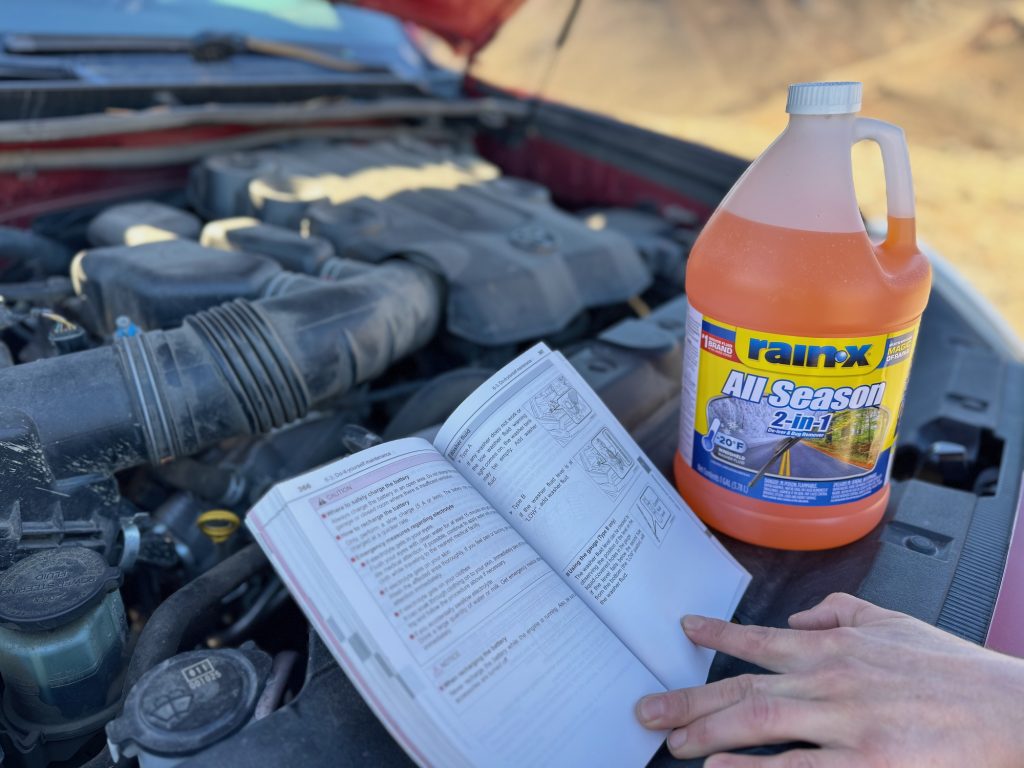
Most of the time, you don’t have to put much thought into the fluids that keep your 4Runner running. That’s especially true if you are in the habit of getting your oil changed every 5000 miles by a shop and they keep things topped off. But sometimes, you need to plan ahead for different climates and the adventure you are heading out on. Or, worst case, you end up in a situation that forces you to take action. A very cold and snowy day in Colorado taught me just that about my windshield washer fluid.
As I was driving down the highway, temperatures were well below freezing, and my windshield was being splattered by the vehicles in front of me. No problem, right? I hit the windshield washer fluid control, but the wipers came on and no fluid came out. I literally could not see, as the windshield had become heavily streaked with mud and ice. So, I pulled over, popped the hood, and checked the washer fluid to confirm there was plenty in the reservoir. I jumped back in the truck and tried the washer fluid again, but no luck.
Then, it dawned on me, that the washer fluid had frozen in the nozzles. I manually wiped my windshield off with a scraper and rag, searched for the nearest service station, and carefully drove there without turning on my wipers. I bought a winter-rated windshield washer fluid and topped off the reservoir. After cycling washer fluid through the nozzles for a few minutes, the fluid started flowing again and I was back in action. Lesson learned.
Table Of Contents
Overview
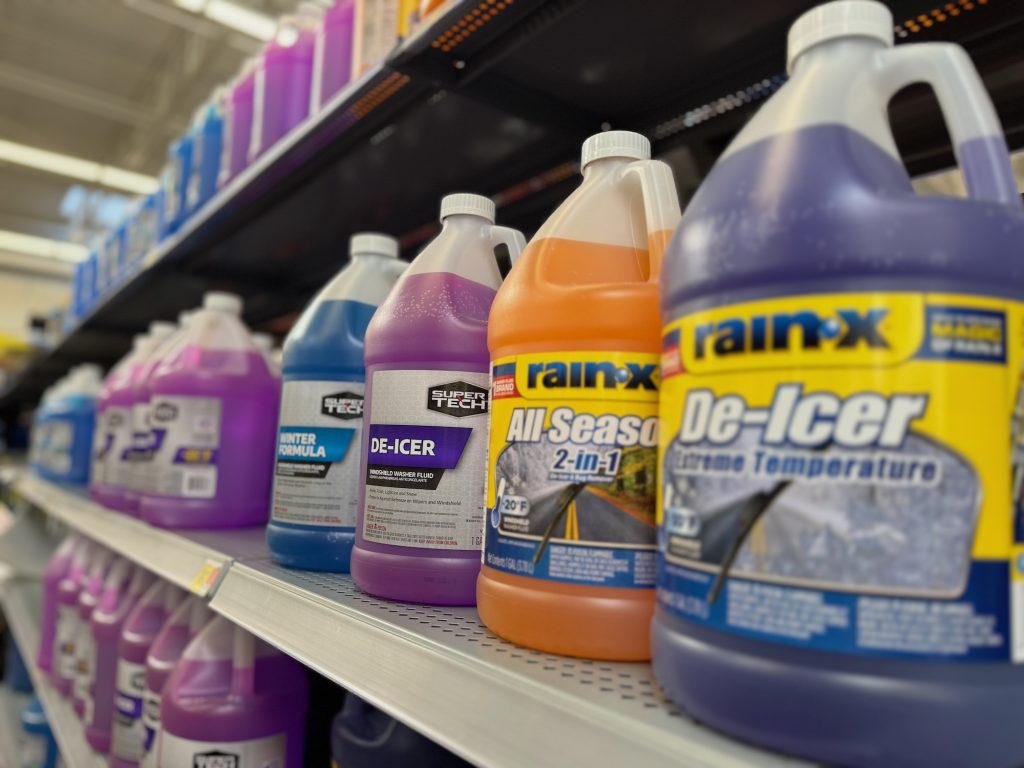
Windshield washer fluid types and recommended climate usage:
- Summer
- Has a temperature rating of 32 degrees Fahrenheit or does not show one at all. Typically has add-ons like bug remover or water beading.
- Use all year round in locations that don’t typically freeze in the winter like Phoenix, Arizona. Or, switch out in the winter.
- All Season
- Has a temperature rating of typically around -20 degrees Fahrenheit. Has add-ons to support both de-icing in the winter and bug removal in the summer.
- Use all year round in locations with 4 seasons, but not extreme wind chill, like Seattle, Washington.
- Winter/De-Icer
- Has a temperature rating of -20 degrees Fahrenheit or colder and typically notes that it is a de-icer.
- Use in the winter, based on the likely coldest climate you may find yourself in. Switch out in the summer.
- Concentrates and Alternatives
- There are many options on the market to choose from and opinions to boot. Some folks like to use water in the summer, make their own, or use a concentrate to control the level of dilution.
- Biodegradable/Environmentally Friendly
- There are alternatives to reduce your footprint on the environment. Do your research on these options as well, as you may need to add methanol or alternate alcohol in the winter – which studies have shown is an environmental toxin.
A final note, the location you are physically at will sell specific windshield washer fluid types appropriate for the climate. If you are planning ahead for a destination road trip or moving across the country, you’ll want to order online.
What is in windshield washer fluid?
While they don’t list specific ingredients on the bottle online research is also a bit vague – the key ingredients are methanol and water, plus additives for bug remover, water beading, or color.
Can you use the same fluid all year round?
It depends on the type of fluid in your reservoir. If you have an extremely cold weather windshield washer fluid in your reservoir, it will have a higher percentage of methanol, which is good for not freezing but could evaporate in high weather temperatures. Alternatively, if you have a summer-rated washer fluid, it will freeze up in winter conditions.
In these cases, you can change out your washer fluid to a different type or dilute your reservoir with a summer or winter-rated fluid depending on the season.
I’ve not had a problem using an all-season washer fluid rated at -20 degrees Fahrenheit. That’s with living in Lake Tahoe during heavy winters, and traveling down to Reno when it’s been 110 in the summer. If you live somewhere more extreme like Alaska, or upstate New York, you will likely need to make adjustments.
Can you mix windshield fluid types?
Yes. Mixing washer fluids type will dilute what’s currently in your reservoir and it will not cause any damage.
What if your reservoir is full?
Continue to run the washer fluid from inside the car until enough has been used to top it off with the type you need. But, if you’re a purist, you can use a siphon hose that is narrow and long enough to pull the liquid out from the reservoir.
How To Fill The Reservoir
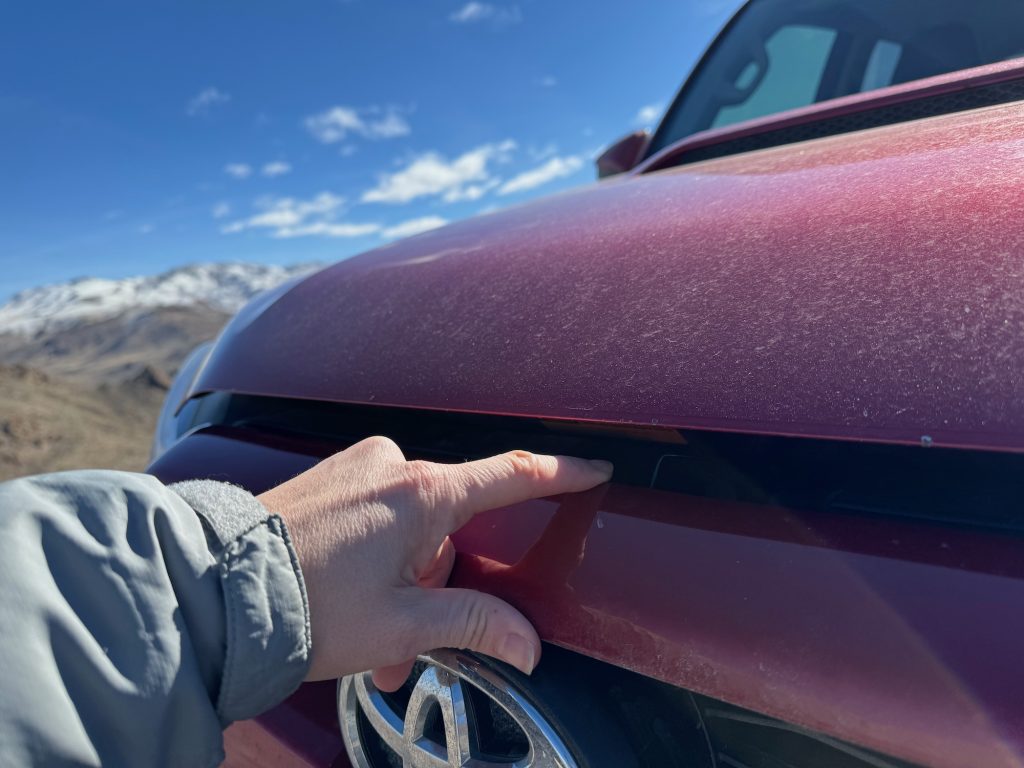
Filling up your windshield washer fluid reservoir is simple and only takes a few minutes.
To open your hood – on the driver’s side, to the bottom left, below the steering wheel, you will find a lever to pop your hood up. Pull the lever towards you.
There is an additional lever, in the middle of your hood, that you need to pull towards the left to unlock and release the hood. The hood will open with a light push-up, once the lever is released.
Materials:
- Funnel
- Rag
- Windshield Washer Fluid
Step 1. Locate Reservoir
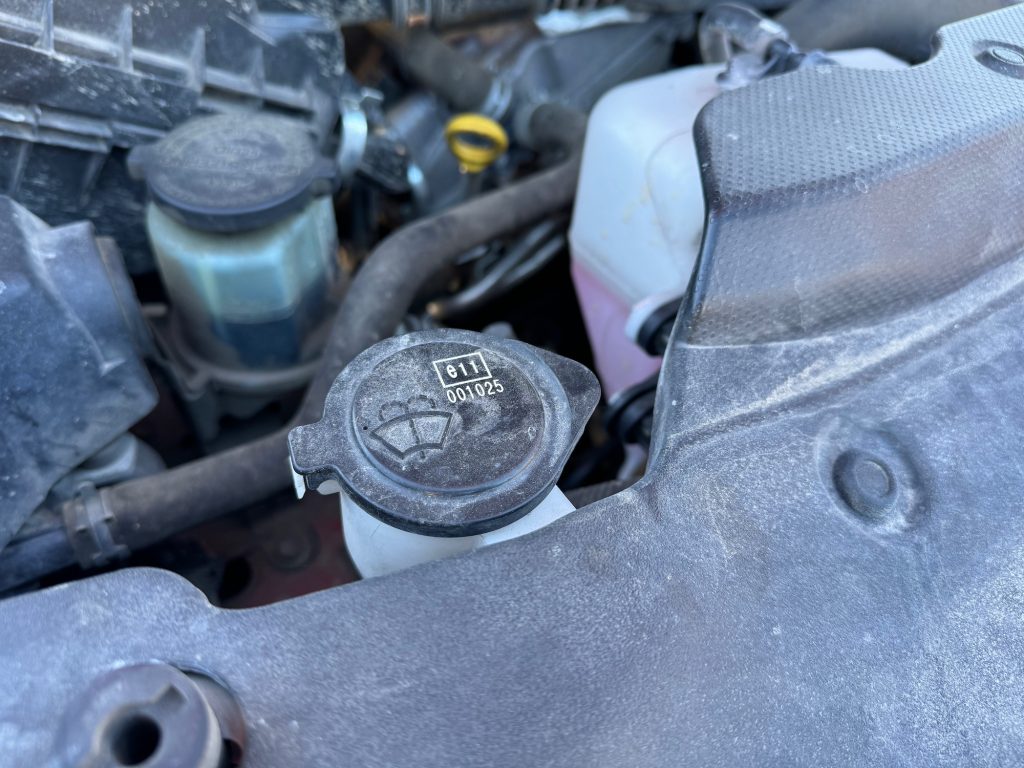
At the front left of your engine compartment, find the cap with the windshield with fluid arcing up and over displayed. Validate the icon against your vehicle manual if you are unsure. You DO NOT want to put the wrong type of fluid into the wrong reservoir.
Step 2. Open Reservoir
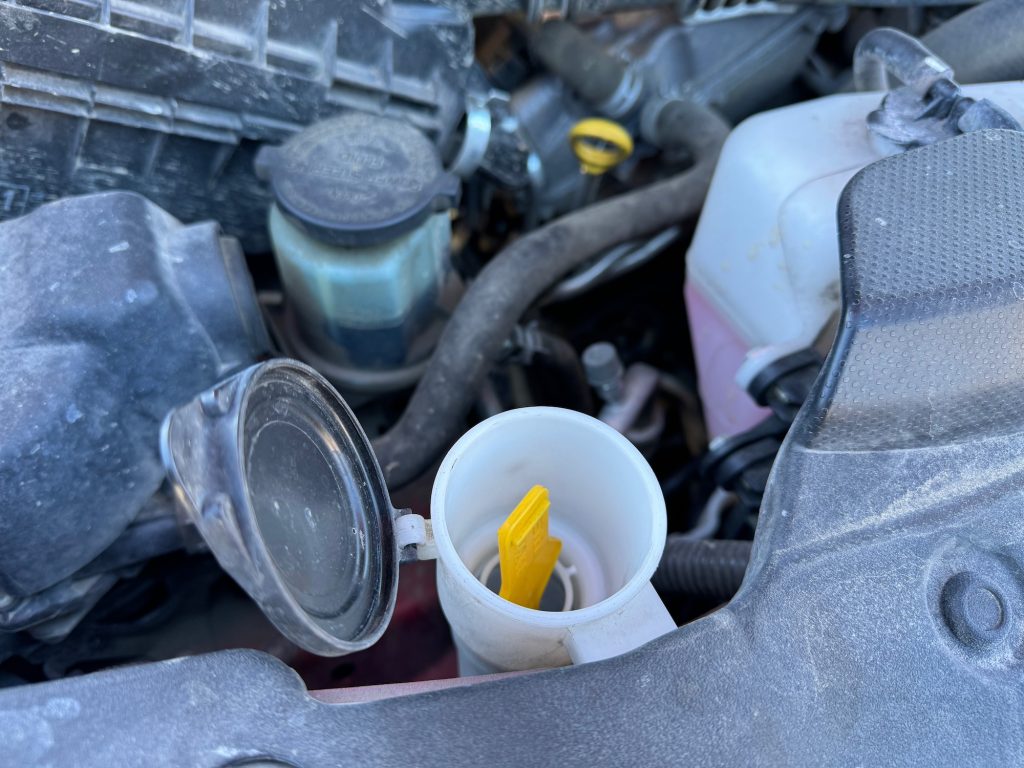
Use the lip on the cap to pop it off to expose the reservoir. You will likely see a measuring stick inside – mine is yellow as seen in the picture above.
Step 3. Check Guage
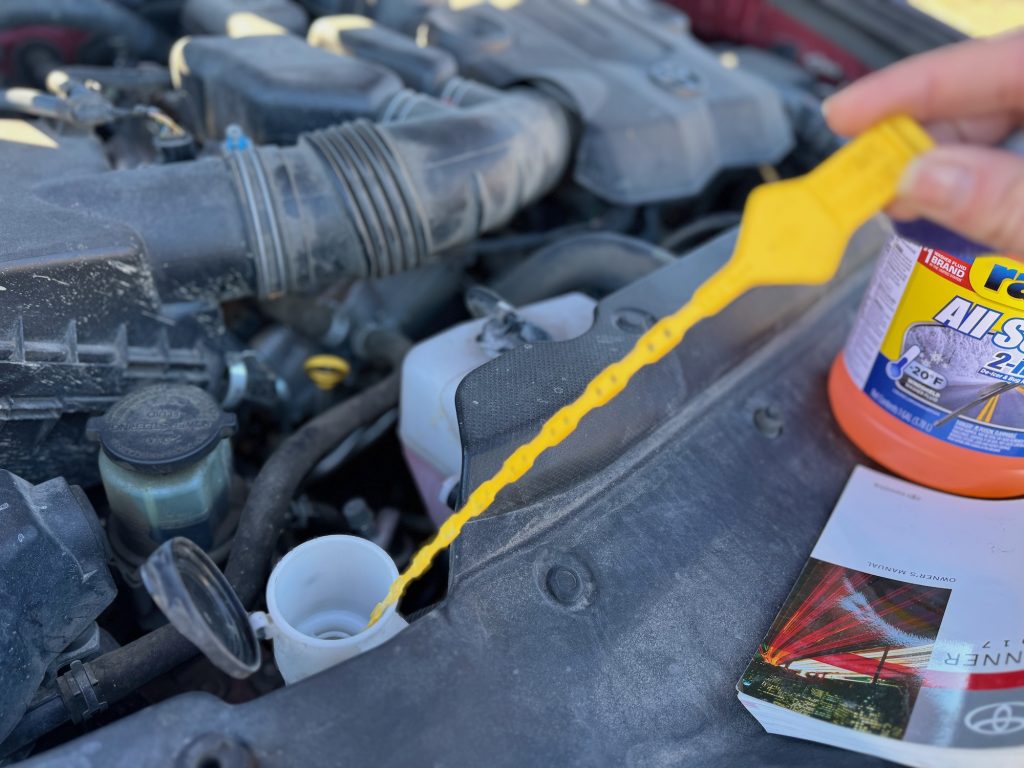
Pull on the (yellow) gauge and completely remove it from the reservoir. Check each opening on the gauge to see where the liquid is to determine how full – or empty it is.
Step 4. Fill Reservoir
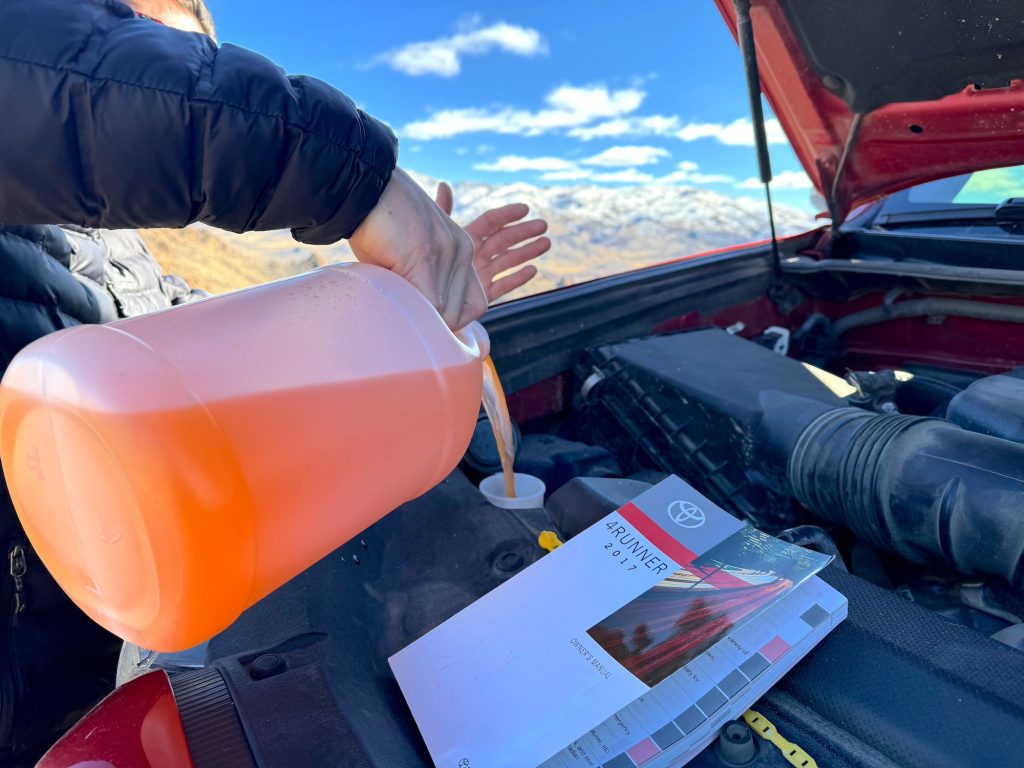
Insert a funnel into the washer fluid reservoir. Then, uncap and pour your new washer fluid into the funnel. Fill up the reservoir until the bottle is empty OR you can visually see it in the narrower part of the reservoir tube. Remove the funnel slowly so that it finishes draining into the reservoir and wipe the funnel with your rag.
Step 5. Clean Up
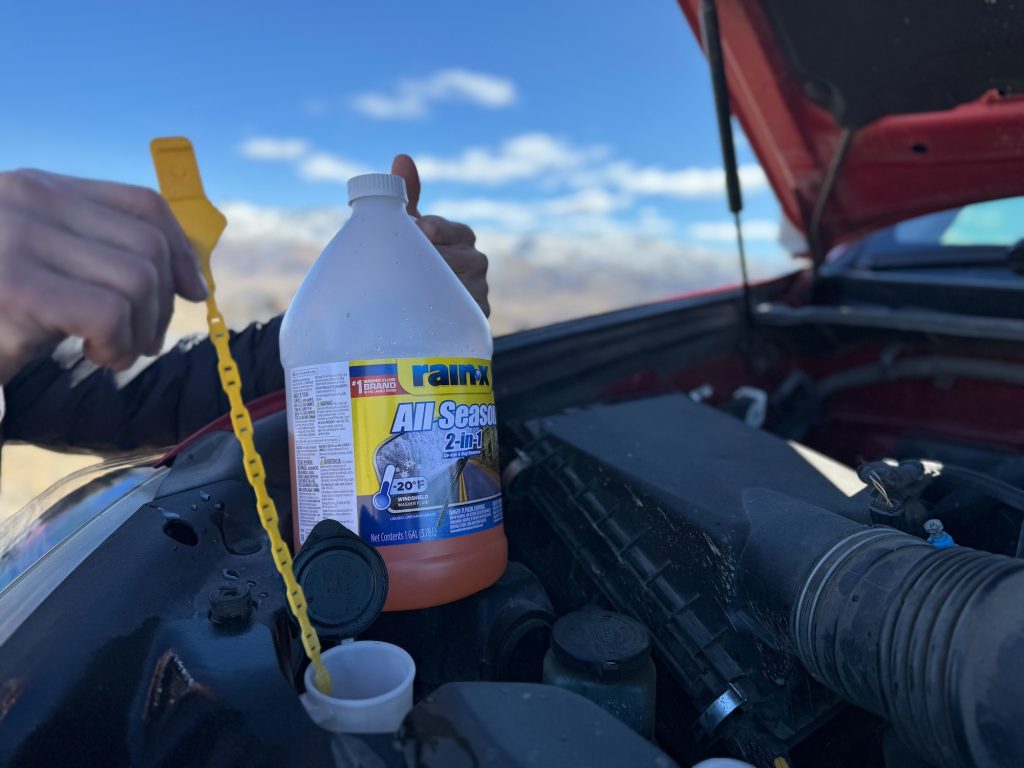
Return the (yellow) gauge to the reservoir by inserting and pushing it into the hole. You can always pull the gauge back out to check the fullness of the reservoir (wipe with the rag prior to inserting). Once the gauge has been reinserted, flip the cap back over the top of the reservoir and press firmly to ensure it is closed.
Use the rag to wipe up any spilled fluid.
Close the hood of your 4Runner and run the windshield wiper fluid (especially if you are in cold weather) to ensure that the fluid is flowing properly for both your front and rear windshields.
Final Thoughts
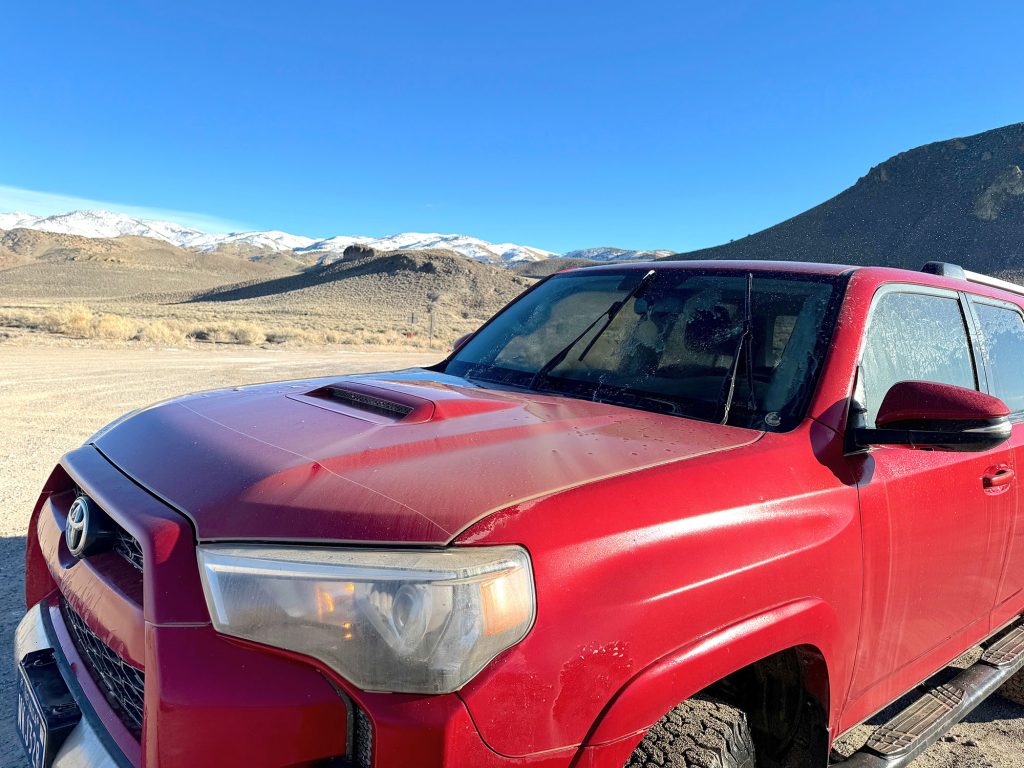
The actual process of your filling or topping off your washer fluid is super simple. The most important knowledge to have is which type of fluid to use and when. I learned this the hard way, and hopefully, after reading this, you won’t have to.
As the name implies, washer fluid is supposed to keep your windshield clean so that you can see the road – but it can only do that if it’s suitable for the climate that you’re driving through. If you have any additional questions, please don’t hesitate to ask in the comments!

I would be cautious about mixing different window washers as you never know what kind of chemical reaction they could make. I usually flush out the system using water before changing to different solution. When filling only with water, make sure to use distilled water to avoid biofilm build up, that could clog the nozzle and hose over the warm season.
the post we did not know we needed, but we needed.
Solid post! Seems like a simple topic, but quite a lot to consider. I just run all-season year-round. Maybe one more suited to remove bugs during longer road trips.
I learned the same lesson going over Vail Pass a few winters ago as we live in Tucson and I didn’t even think that my windshield fluid would freeze. Silly me. After an semi-quick stop at each off-ram to dump fluid and squeegee off the road scronge we finally to warmer Denver and all was fine.
Thanks for the good dissertation on the various fluid types.